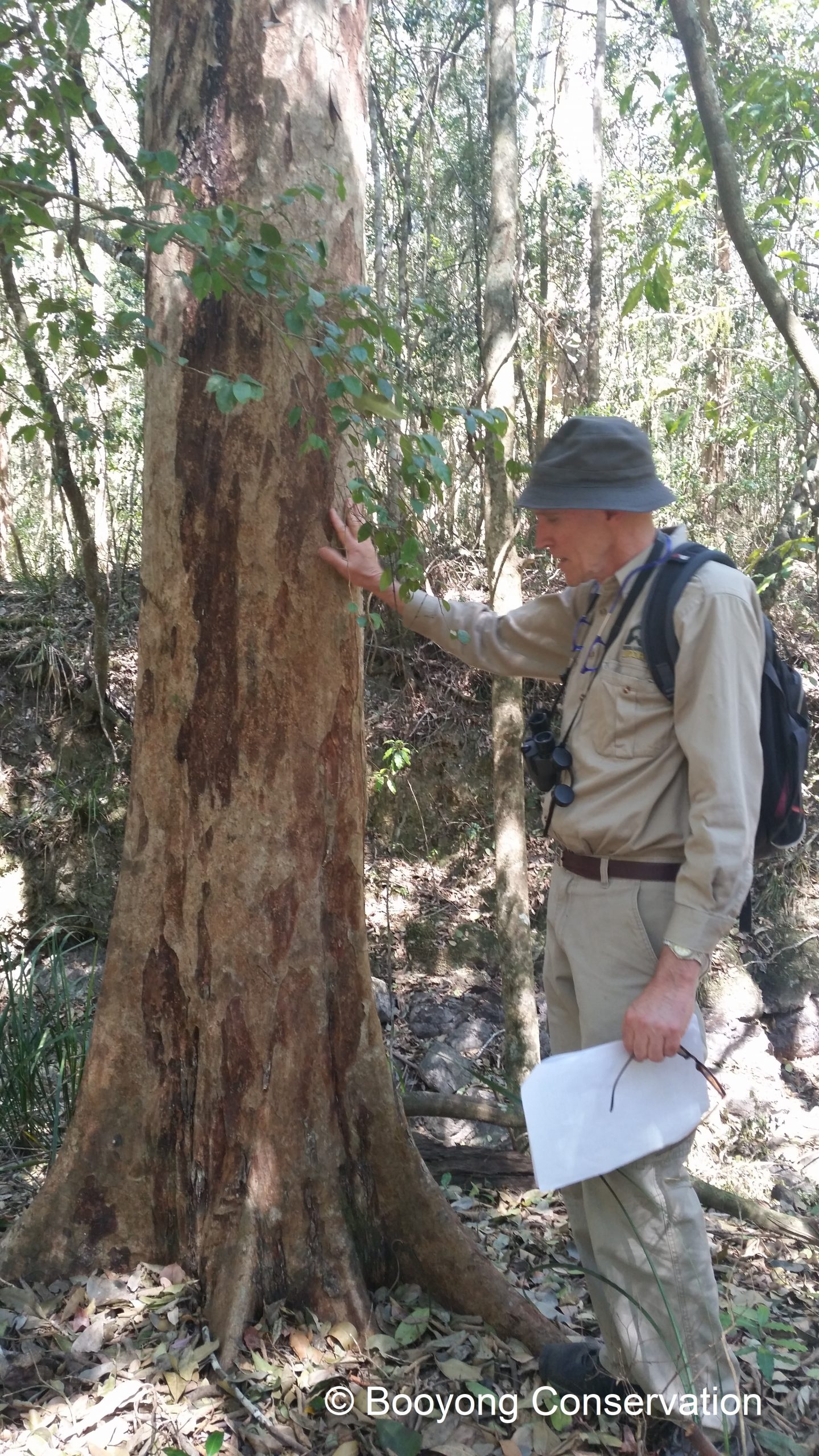When visiting recently our friend from the local Botanical group, Les identified two large Water Gum Trees (Tristaniopsis Laurina) near the secret Billabong. They have a lovely rich red bark and are quite enormous, obviously very happy being located near the water. Not surprisingly, this tree is commonly found on creek beds along the east coast of Australia. It belongs to the Myrtaceae family and is related to the eucalypts. We are happy to say this tree is fortunately pro tected forever in our conservation area.
tected forever in our conservation area.
Growing – The Water Gum tree is a slow growing evergreen rainforest tree, growing 5-15 metres and prefers light shade to full sunlight. The bark is smooth when young and becomes scalier as it matures. It lowers in January and Early February and they are orange-yellow and occur in clusters and seed capsules that are woody and globular. Fruiting occurs in Autumn. Unfortunately, we were unable to see the leaves in the canopy of this tree as it so tall, but now that we know they’re their we’ll be sure to take a closer look in the future.
Care – This water gum grows well in cultiv ation and tolerates a variety of soil types from well-drained rocky soils to heavy clay loams, in urban areas it is commonly used as a street tree.
ation and tolerates a variety of soil types from well-drained rocky soils to heavy clay loams, in urban areas it is commonly used as a street tree.
Pests and Diseases – Scale insects commonly attack this species and leaf-hoppers and leaf-eating beetles occasionally attack the leaves but damage is rarely severe enough to warrant spraying.
Propagation – The Water Gum (Tristaniopsis laurina) is grown from seed which normally germinates after three or four weeks. Seed Capsules can be collected in Autumn when still green and left in the sun to open and dry. No special pre-sowing treatment is needed. The seed should be sown in a loose, well-drained propagation mix at a depth equal to the diameter of the seed.
Benefits – The Water Gum attracts bees, nectar loving birds and provides food for the Blue Triangle Butterfly.
Uses – According to the Australian Botanical Gardens, the timber of the Water Gum is close grained, tough, strong and fairly light in weight, making it ideal for the commercial production of tool handles, mallets, golf club heads and wooden screws.

You must be logged in to post a comment.